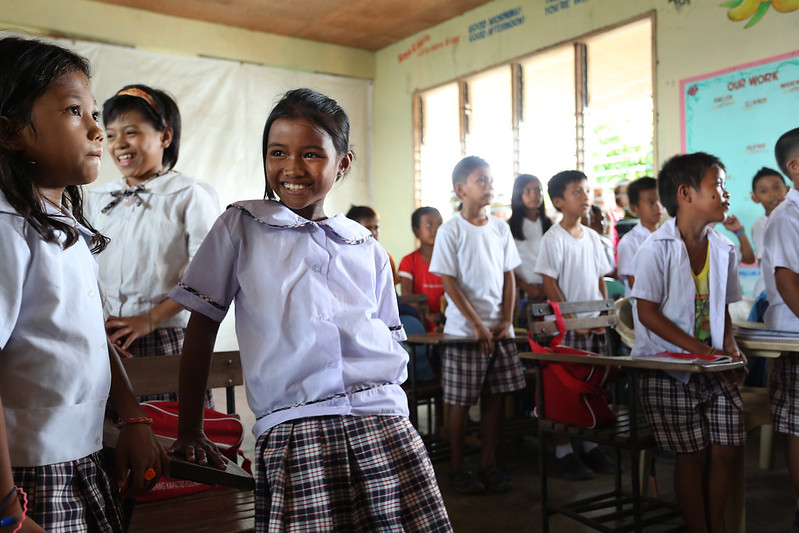Teaching climate adaptation to kids in the Philippines
Lessons that help people prepare, respond and recover from natural disasters have been added to the curriculum in the Philippines.
B
eing ranked as the third most disaster-prone country in the world, the Philippines continues to strengthen its resilience through mainstreaming of disaster risk and vulnerability reduction (DRVR) and climate change adaptation (CCA) in education and other development tools.
CCA and DRVR have been integrated into the K to 12 curriculum through the joint efforts of Local Climate Change Adaptation for Development, House Special Committee on Climate Change, and Albay Representative Joey Sarte Salceda.
Starting 2016, they worked with the Department of Education, Climate Change Commission, National Panel of Technical Experts and other government agencies to develop a set of learning materials and teachers’ guide.
To date, there are 48 books developed, available and accessible to all stakeholders in the Association of Southeast Asian Nations.
Salceda said no less than Education Secretary Leonor Briones attested that the K to 12 Learning Materials and Resources underwent rigorous content review by the Bureau of Curriculum Development in coordination with the Bureau of Learning resources.
The learning materials and resources were suitable for printing and use in public schools, he added.

Climate adaptation learning materials have been developed for children. Photo by World Bank Photo Collection/Flickr
Salceda reminded the disaster risk reduction and management councils in the regional and local levels about the National Disaster Risk Reduction and Management Council’s recommendation for them to use the K to 12 learning resources for climate change adaptation.
Salceda also recalled that the Department of Interior and Local Government supported the use of K to 12 Learning Materials.
This was to strengthen the capacities of local government units and communities in mitigating and preparing for the impacts of disasters, he said.
It also aimed at developing and strengthening the capacities of vulnerable and marginalized groups to mitigate, prepare, respond and recover from the effects of disasters, he added.
Salceda vowed to craft additional measures for the propagation of knowledge and expertise on CCA and DRVR. (PIA-5)
The ideas presented in this article aim to inspire adaptation action – they are the views of the author and do not necessarily reflect those of the Global Center on Adaptation.